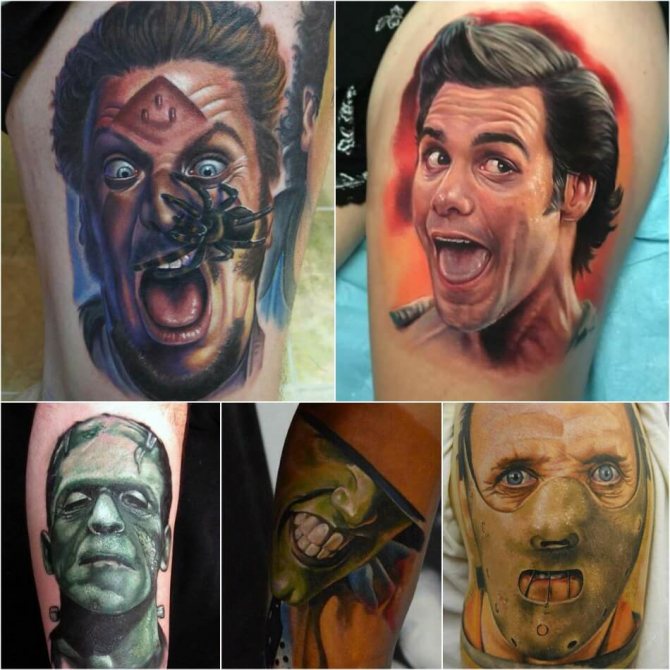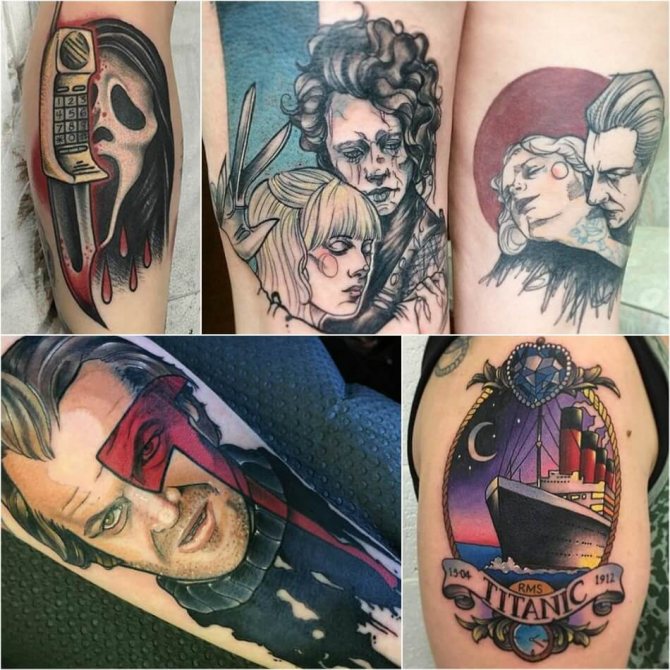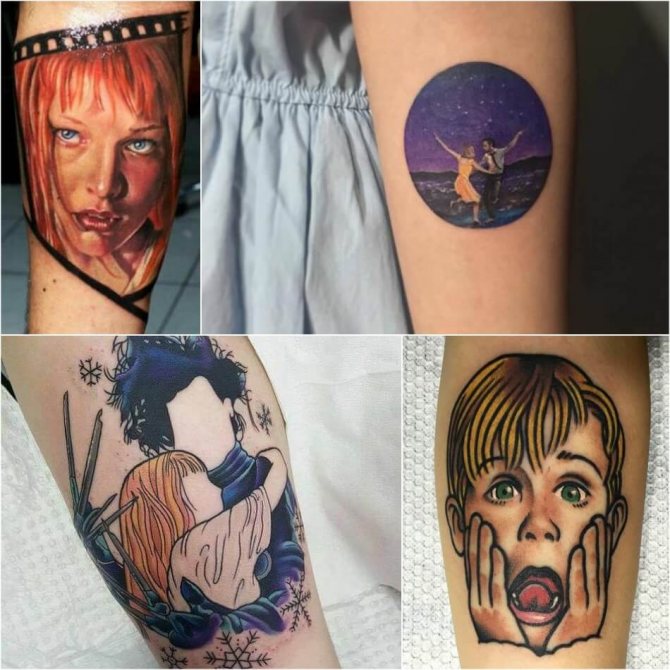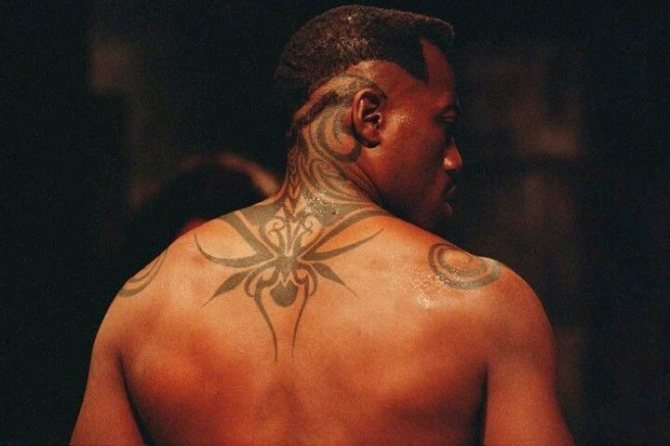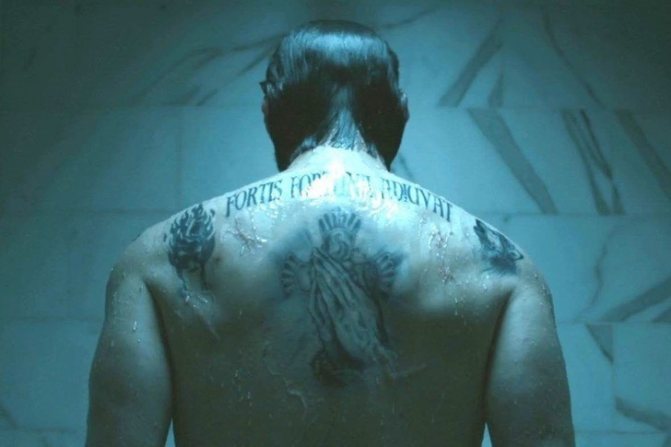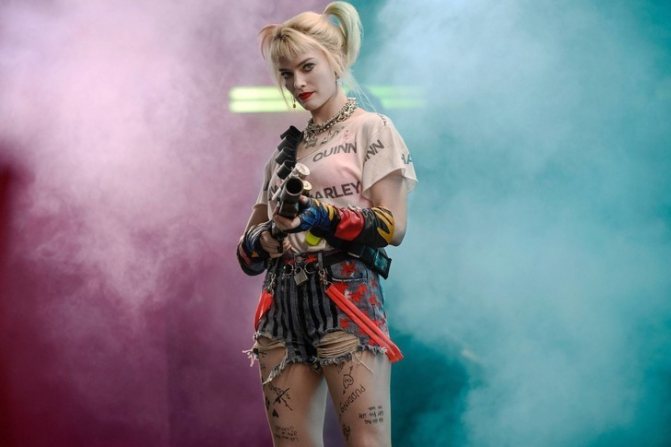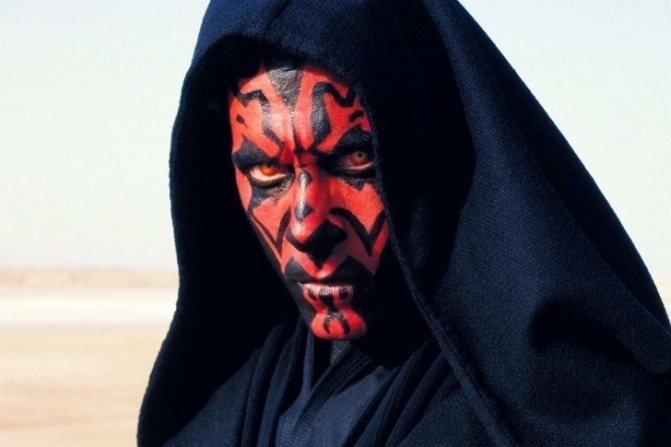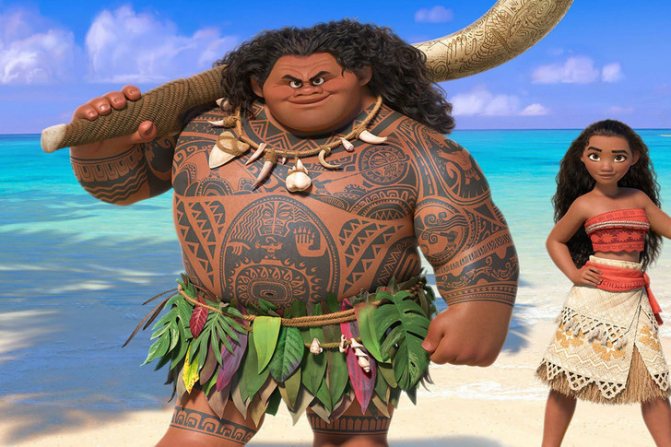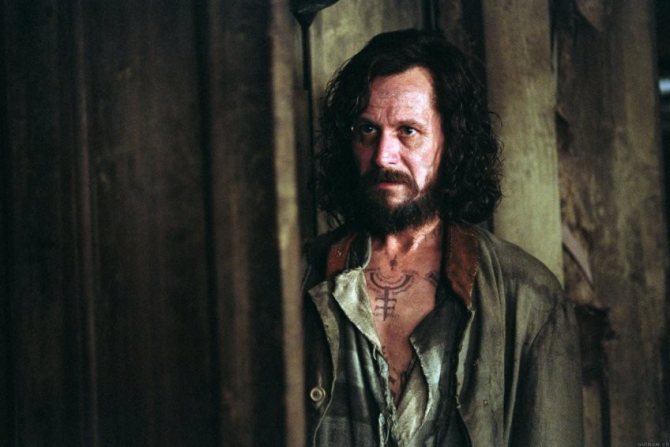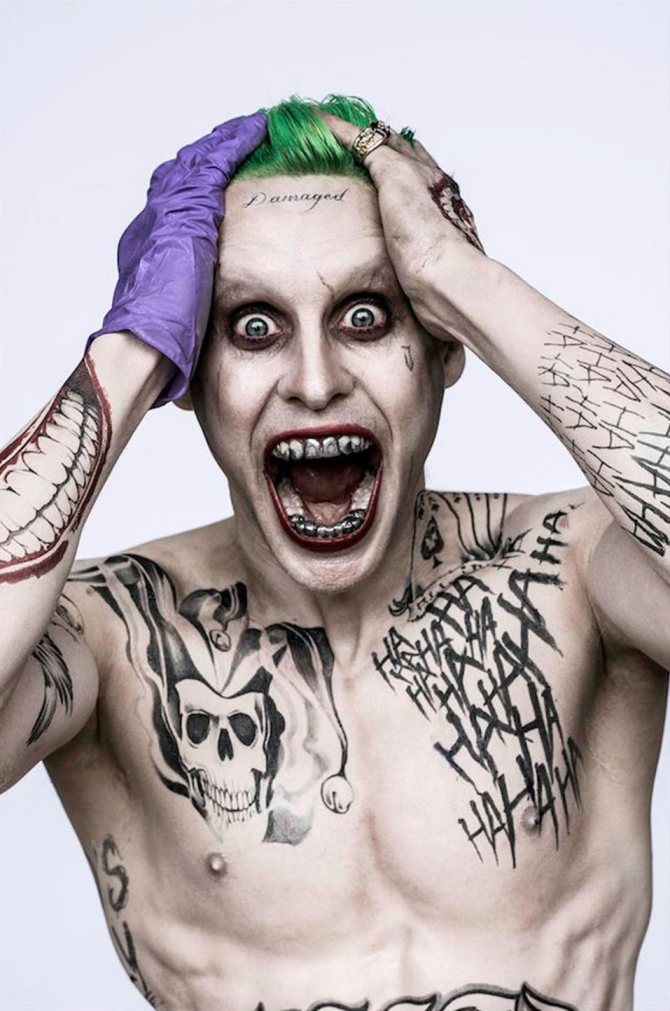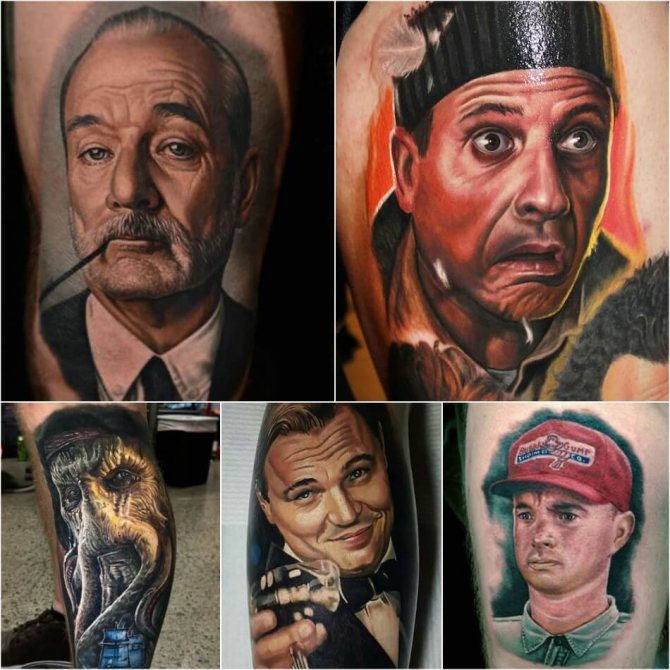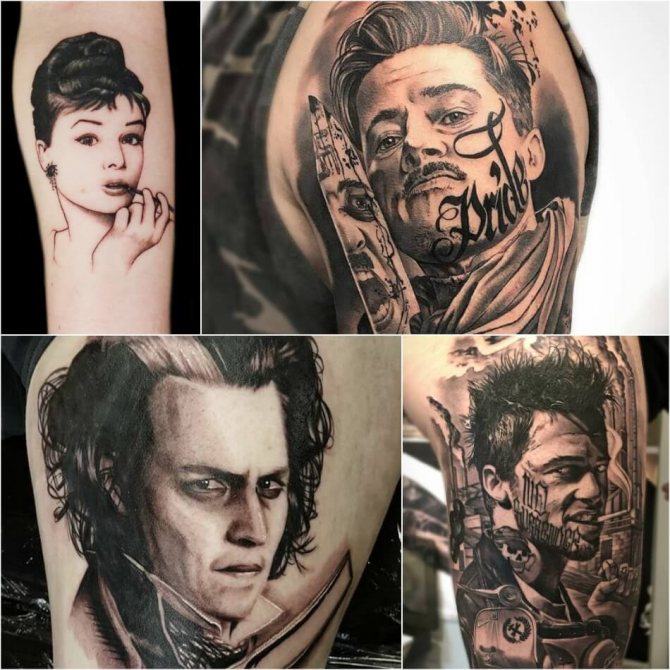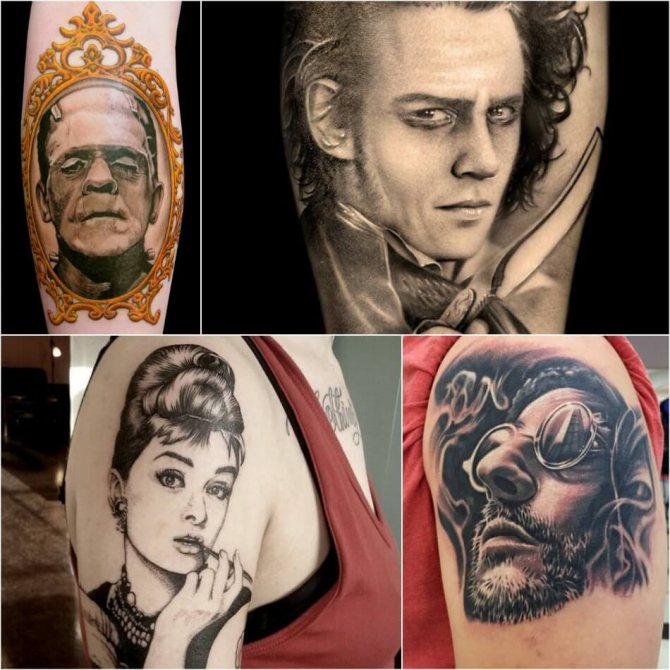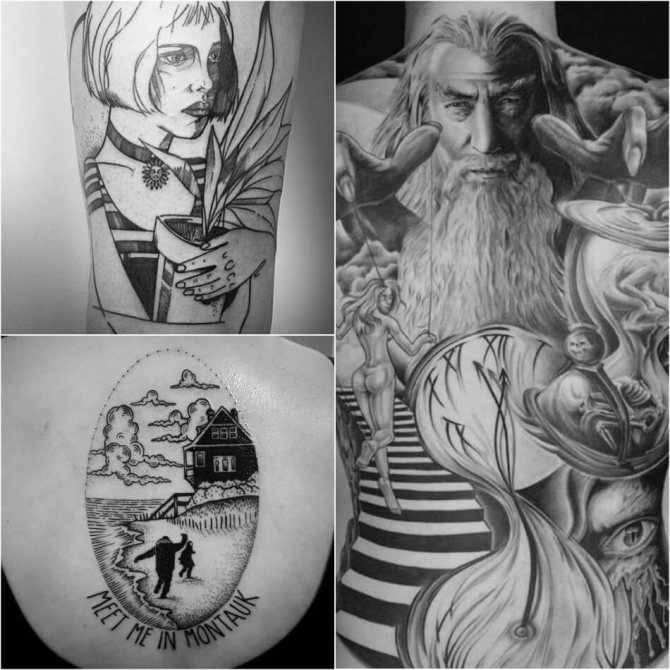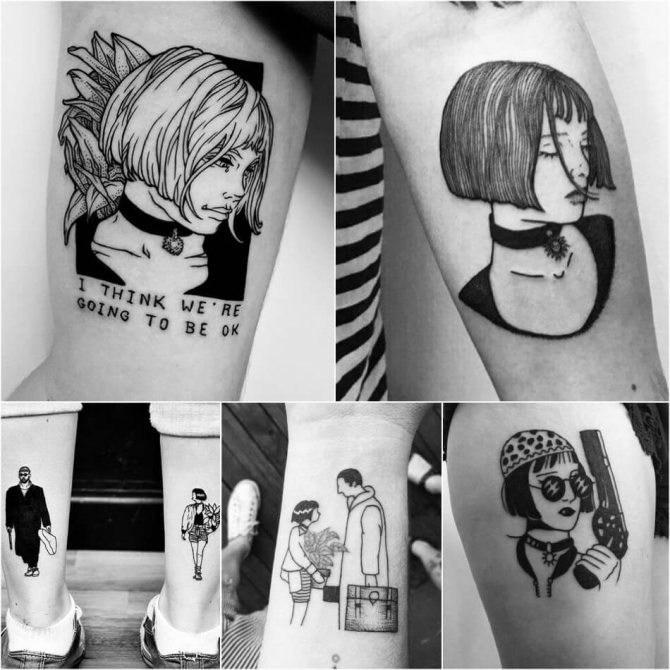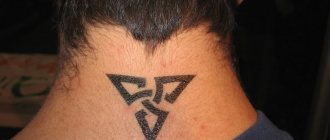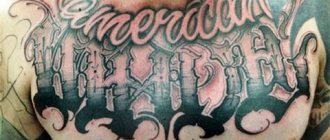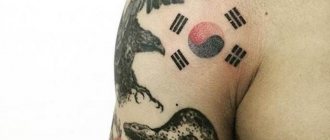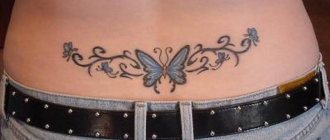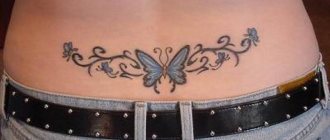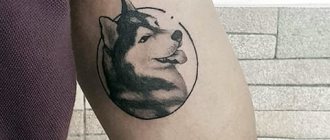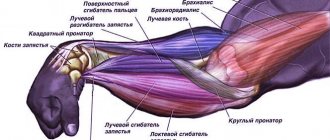Tattoos with movie characters are becoming more and more popular every year. A favorite character, director, movie plot become for many people symbols, talismans, heroes, which they are ready to imitate.
Tattoo from the TV series "Volchok"
The hero of the movie Derek has an original symbol made of intertwined Alpha, Beta and Omega. The meaning of the image is the variability of being, cyclicality, when Alpha can turn into Beta, and Omega become Alpha. Triskelion means development and victory, symbolizes water, earth and sky. The image on Derek's body with clear solid lines can be interpreted as a reincarnation.
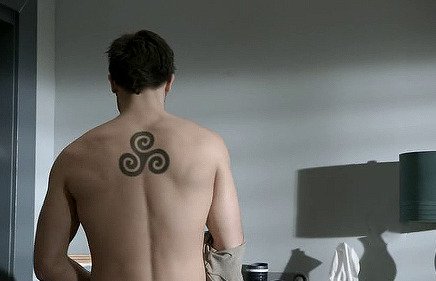
The image of the dragon in Chinese and Japanese culture
This image appeared in China and Japan, and then spread throughout the world. Today the image of this creature has its popularity, and therefore it is important to know what the dragon tattoo means and who and when it is applied. It is important to note that the symbolism of the image is preserved. As before, the Dragon symbolizes heroic strength and individuality. Many years ago, the peoples of Asia and the East worshipped the creature, and all because they knew that the Dragon is immortal. At the moment, the image of the creature is not uncommon, it is popular among both men and women. Apply all kinds of transformations of the image to those who are confident in themselves, who have physical stamina, spiritual strength.
But we should not forget the main thing:
- the black dragon is a symbol of respect
- A red dragon is a clear symbol of passion and love;
- Gold dragon - an undeniable sign of wisdom.
Printed dragon tattoo on the arms, legs, shoulder, thigh. At this point, the location of the creature is determined by a person's personal preferences.
Tattoos from the "Vikings" series
The movie is based on the Scandinavian saga of Lodbrok. The hero's body is covered with images on the Nordic theme, which is popular at the moment. The characters in the series apply tattoos for ritual purposes - to gain patronage in battle, to intimidate the enemy. Originally Vikings had tattoos in the form of runes, ornaments and patterns, which became more and more numerous with age.
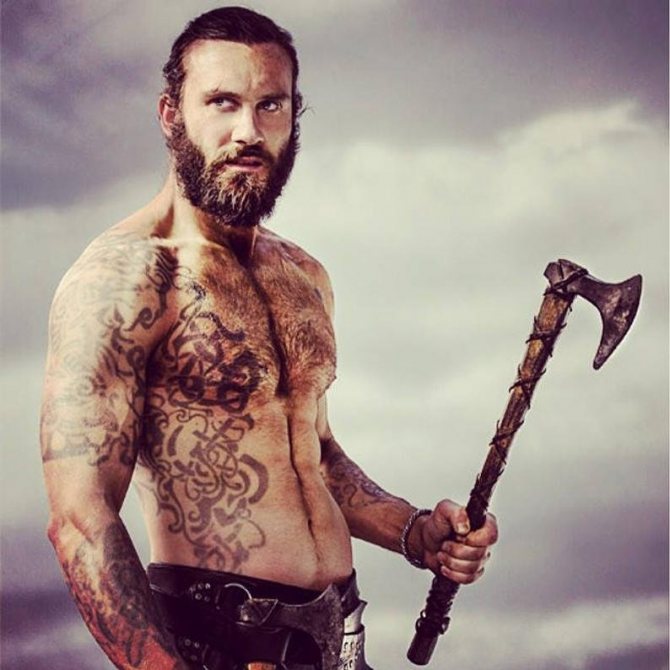

Verdict
Apatow's new film registers an important shift in contemporary English-language comedy, which is becoming more depressing. Whereas bromance and casual sex jokes were popular in the noughties, a time of killjoys, comedy is now becoming another form for talking about the main disease of the turn of the decades, and it's not MSD, but all kinds of psychological trauma. Current standup comedians, whose performances become hits on Netflix, are not afraid to address their own traumas: open lesbian Hannah Gadsby jokes about homophobia and misogyny, Bo Burnham, who became a star when he was a teenager, devotes his latest rush to the creative crisis and emotional burnout. And British stand-up comedians so often build their conceptual performances around the deaths of close relatives that the genre has even been called the "dead dad show".
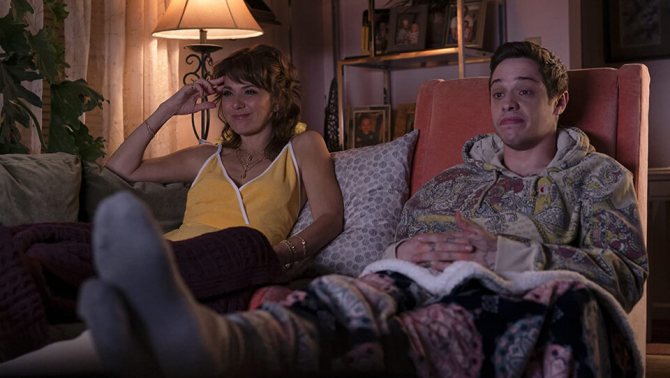

Marisa Tomei and Pete Davidson
Roughly in the same vein are sad comedies (sad comedy), one of the major serial trends of recent years. Netflix's landmark animated series "BoJack the Horse" deals with depression and fear of emotional intimacy. Phoebe Waller-Bridge became an international star, writing out her own complexes in the semi-autobiographical "Crappy. In such a context, what is required of comic writers and performers is first and foremost sincerity and storytelling talent. Davidson, for example, is by no means a strong actor, but playing himself is almost impossible to fake. So if you're interested in the fate of a tattooed guy from the junkyard, "The King of Staten Island" is your movie (due out in Russian cinemas on September 17). And if not, wait until next week.
Watch Judd Apatow's major projects - from "SuperPerts" to "Girls" - on Kinopoisk HD.
Wayne's tattoo from the show
The hero of the movie has an anchor on the outside of his arm, a symbol of duty and responsibility. It is a classic tattoo signifying strength of spirit, strength of character.
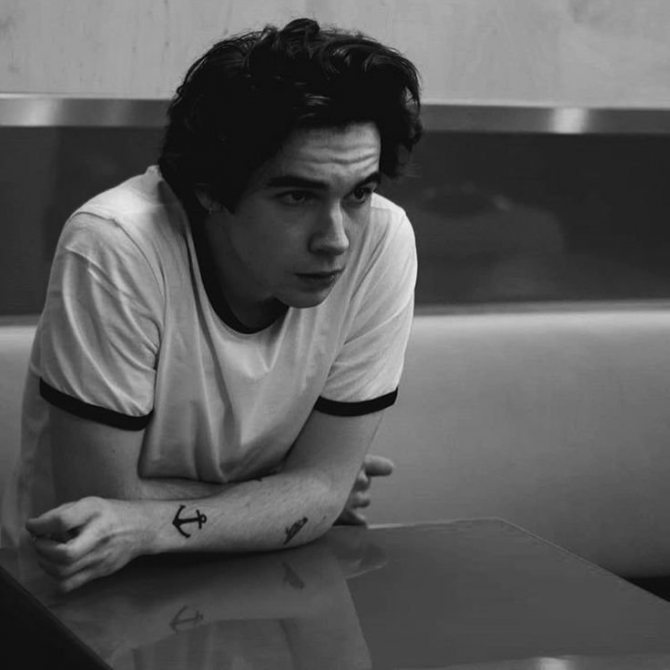

A selection of photos of tattoos from movies and TV series includes images on the hero of Brad Pitt in "The Big Kush". His body is decorated with roses, the Madonna on his chest, "The Last Supper" on his back. The street boxer has a bulldog, the symbol of Great Britain, and the roses indicate pure love.
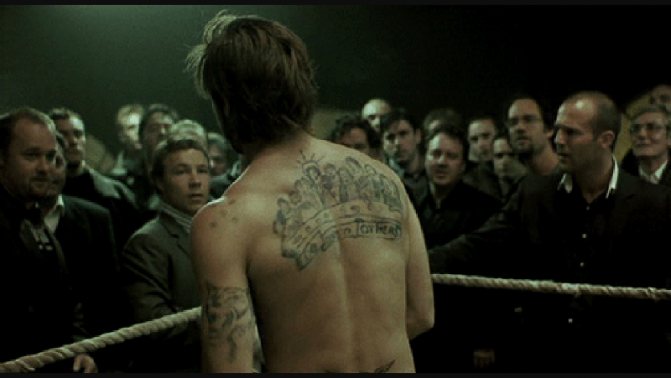

The movie character in the movie "Troubles in Little Tokyo" has a fiery dragon on his chest. The body of the head of the Yakuza (Tagawa) is completely covered with a tattoo in the style of Japan. This indicates that the hero belongs to the clan. The dragon is a traditional Japanese symbol.
Red Dragon movie review
Red Dragon (2002) Red Dragon drama, thriller Director: Brett Ratner Starring: Anthony Hopkins, Edward Norton, Ralph Fiennes, Harvey Keitel, Emily Watson Premiere: November 28, 2002 Watch it on Okko for 1₽.
It is quite obvious to the common Soviet viewer that Thomas Harris is no Homer, none of the epic's directors - Mann, Demme, Ridley Scott or Ratner - are Fellini either, and Dino De Laurentiis clearly saw himself in the image of the "cute ogre" from the very beginning.
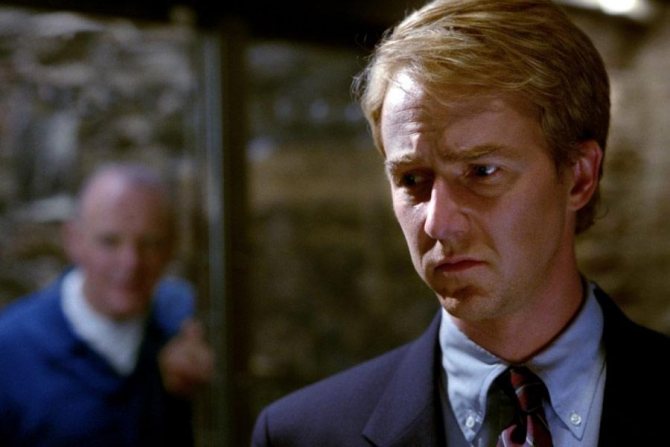

"Red Dragon" is made precisely as another addition to "Silence of the Lambs," with a point of reference in Anthony Hopkins that sort of tests the rest of the entourage for lousiness. It was the audience's sympathy for his particular ogre that brought him his first worldwide success, and gave him so much importance that a film epic arose. So the most important thing in this case is to emphasize that providing a prequel to the comedy writer Ratner ("Rush Hour", "Rush Hour 2") succeeded in principle.
A still from the film "Red Dragon"
In the first shot, the symphony orchestra conductor waves his baton - you can see Hopkins in the audience (thank goodness he wasn't "rejuvenated" as promised), eyeing the plump cellist - after the concert at a dinner at Hopkins' villa, one of the violinists asks: "What is this amazing pâté made of?" - "You wouldn't eat it if I told you." So "off the bat" everything is only possible from the accumulated experience of the previous series. Right after just as rhythmically, FBI agent Edward Norton arrives at the same villa with a hunch that the maniac, whom he and Hopkins as a psychiatrist emeritus have long tried to catch, is not killing for simple dismemberment, but with gastronomic leanings: "Why didn't you tell me that, Professor, you could have guessed it?" The professor comes out for a moment, Norton examines the exotic figurines, between them a cookbook with a bookmark, and upon opening it, Norton sees that over a recipe for veal pâté the professor's hand has marked with interest, "Sweet meat!" At this moment, Hopkins stabs him from behind with a stiletto, and Norton, in turn, stabs Hopkins with a bunch of exotic arrows... The exposition is not over yet, further glimpses of newspapers and opinions, journos and resuscitation, but the aestheticization of the "cute ogre" image has been pushed to the limit. Hopkins is in every detail an intellectual snob, lively and self-sufficient, but an equal interlocutor wouldn't hurt anyone, and Norton has a talent for empathy, and there is hope in that. Of course, just as equality emerged, they got to each other's knees. That always happens, but Ratner provided the limit in the first quarter hour of viewing.
A still from Red Dragon
Next comes the "rest of the entourage," that is, the actual plot that unfolds a couple or three years later. Here everything is quite traditional for psycho-thrillers, but there are also some successes. As in "Silence of the Lambs," a serial killer emerges, for the capture of which the resurrected Norton is forced to meet again with an equally resurrected, but given a life sentence in a special psychiatric hospital, Hopkins. The special psychiatric hospital, with its idiot chief physician, restaurant dinners in a gothic basement, and a nifty final reference to the same Silence of the Lambs, is convincing in its portrayal. The episodes and episodes in general are internally honed. Harvey Keitel (Norton's boss) reacts in a meeting over yet another terrible crime when everyone around him is frozen in horror: "Well, what? You can worry about it, of course, but you can get down to business." The cultural context in the form of William Blake is no less convincingly woven in. Blake is just the thing, as he is already fashionable in thrillers (thanks to "Dead Man"); besides, he was one of the first indeed two hundred years ago to weave mystical Red Dragons, Tigers and other exotics into the eternal Christian Good-Will, and he made so many prints with them that new ones are still being discovered. That said, amidst the intellectual games, witty lines, picturesque details, and brisk rhythm of the investigation, the most substantial find only becomes more apparent.
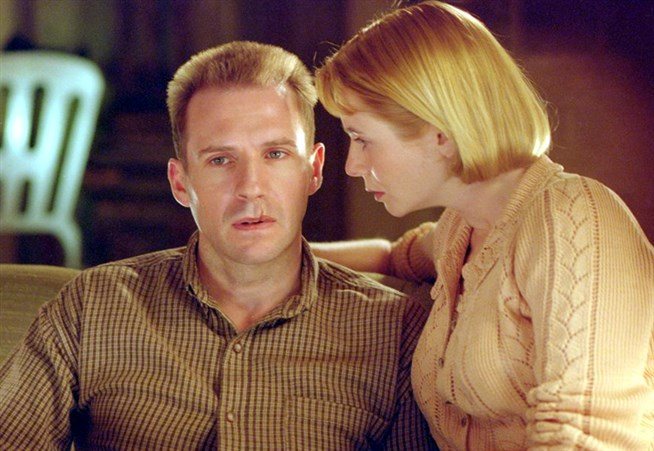

Thank goodness Rafe Fiennes beat out Sean Penn and Nicolas Cage in the casting for the role of serial killer. Fiennes, unlike them, has the image not of a hopeless neurotic but a treatable one ("Onegin"), and that works in the story to the end. Of course, the gorgeous tattoo on his broad back would separately draw the audience in (it wouldn't have been surprising on Penn and Cage). But beyond that, the killer's affair with the blind Emily Watson is sort of self-contained. Ratner, thanks to Fiennes, has given it so much fatalism that, despite the unbreakable scheme of the thriller (the supreme measure for absolute evil), in places it still seems - what if, what if, what if... And it is precisely Fiennes' persuasiveness that leads to the fact that if you go into the fourth series of Gannibalolesterian, then only on the subject of how Hopkins' childhood influenced him to become an ogre.
Unfortunately, all of the aforementioned findings have their downside in "Red Dragon." The plot of the thriller is too tight for a systematic Ratner swing. The swing could have worked, since the director is already of the Internet generation, but the Internet at the same time takes away self-sufficiency, and in place of the thriller scheme from the director is not his own scheme of life, but just something wrong. An established comedic specialization comes out. If the sequel "Hannibal" was too heavy-handed for the genre norm of "Silence of the Lambs," the prequel leans toward levity. But while the Jackie Chan comic action movies still manage to have cranberry juice instead of blood and an all-out happy ending instead of the movie itself, for this genre this approach is devastating.
A still from "Red Dragon".
In a serial killer thriller, virtually none of the serial killings themselves take place. They are present only in the past and as if reflected-through the physical evidence and Norton's visionary memories. In the present, the action itself is prepared, prepared, prepared and suddenly replaced by yet another happy ending (the capture of the journo and the death of Emily Watson's colleague are completely off the table). But after all, the whole "scheme of life" was only built around the scheme of the thriller, so where is it? Norton is no Jackie Chan, no stunts guarantee, and without them and with one "empathy" turns into a pure feature (along with family and fate, and even a duet with Hopkins), only hindered by his constant presence to savor certain non-thriller episodes. Since no other self-sufficiency is intended, the film as a whole falls apart into episodes. In general, you can see the lack of motivation in the mood swings - from farce to detective, from detective to melodrama, from melodrama again to farce, from it to action, which is quite disappointing. In the end, "Red Dragon" turns into a trash-type file: information valuable, but unnecessary to life.
Of course, the final disappointment does not cancel out the synchronized charms - on the contrary, it is largely the cause of them and does not hinder the movie-watching itself. The current levity even counterbalances, in some ways, the heaviness that the preceding "Hannibal" attempted to impart to the norm of "The Silence of the Lambs." It is no coincidence, however, that right after "Red Dragon," Brett Ratner embarked on a threequel of "Rush Hour."
